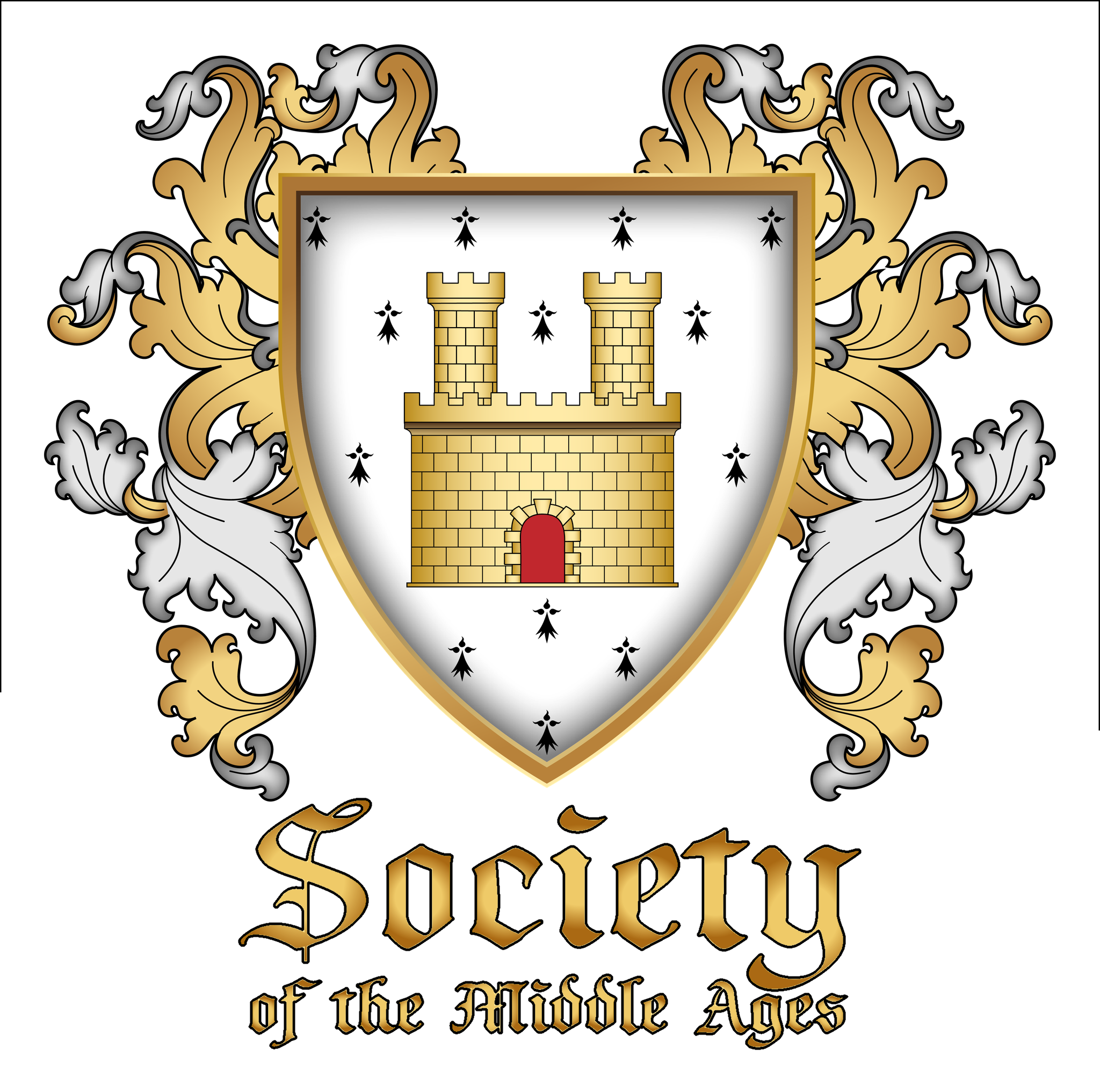Muskatour King of Arms
Letter of Registrations and Returns
LoRR 2021-08
Registrations
- Alexander McBain – New Name, New Arms
Sable, a maunche erminois within a bordure countercompony Or and sable.
Submitted as “Alexander Alaine McBain”, the client’s only documentation was that the elements were previously registered in another reenactment organization. Upon checking that organization’s registrations, we found that the name was registered as Alexander McBain. Since no documentation was provided for a second given name or for the name “Alaine” in Scotland, the name has been corrected to the current form. The client may submit a request for reconsideration with documentation of the middle name.
- Edewart von Dreimeeren – New Arms (see Returns for name)
Argent, on a heart within a bordure azure, an eagle reversed argent.
- Esteban Benguera de Marion – New Name (see Returns for arms)
Submitted without documentation, the Muskatour staff was able to find the following sources verifying the name:
Esteban: found as a masculine given name in S. Gabriel report 2912 (http://www.panix.com/~gabriel/public-bin/showfinal.cgi/2912.txt). Esteban Filipe is dated to 1315 in Leon. The name has not been modernized; the reference is “Gregoria Cavero Domi/nguez, _Las Cofradi/as en Astorga durante la Edad Media_, Universidad de Leo/n, 1992, pp.116, 240-247.”
Benguera: Submitted as “Benguero”, the Muskatour staff was unable to find the spelling within the SMA time period. The form “Benguera” is found at “España, bautismos, 1502-1940” (https://familysearch.org/ark:/61903/1:1:F58N-75G : 16 February 2020), Francina Benguera in entry for Guilem <benguera>, 1534. The change was made with the client’s permission.
Marion: “España, bautismos, 1502-1940” (https://familysearch.org/ark:/61903/1:1:HZZG-5WW2 : 16 February 2020), Maria Marion in entry for Valentin de Yarte Marion, 1545. Although the baptismal record is from 1545, it is reasonable to assume that since the mother’s surname is given as Marion, the name was in use as a surname within our period. This ruling establishes the first precedent of the SMA College of Arms – name elements documented to within 50 years of the end of our period may be used. Use of the name as a placename is plausible in period given its use as such in various parts of the world in the modern era.
- Jaquette de Mauze – New Name (see Returns for arms)
Submitted as Amelinne Jaquette de Mauze, the client provided documentation for each of the three name elements separately. Unfortunately, the double given name construct in France is not documented until the latter half of the 16th century – about 80 years outside the SMA period. The client approved removing the first name.
- Murdoch McArthur – New Name, New Arms
Per fess sable and argent, a crescent argent and three wolves statant contourny sable.
Although submitted as a new registration, the client’s name and arms are previously registered with another organization. Thus, the 17th century spelling of the surname is permitted under the migration allowance.
Returns
- Edewart von Dreimeeren – New Name (see Registrations for arms)
The client provided documentation from the Academy of Saint Gabriel for the given name. However, he cites ‘plausible constructed locative’ as the justification for the byname. “von Dreimeeren” literally translates to “from the three seas.” Without documentation of locative bynames in German referencing “from” water vs. “by the water” or “near the water”, this construct appears to indicate the individual physically resides in the waters. Such a construct is presumed to be either fantastical or indicative of a claim to supernatural powers. The surname comes across very similar to the moniker “Lady of the Lake” or “Lancelot du Lac”, both of which allude to a claim of supernatural abilities.
Since the arms submitted with the name are acceptable, they have been registered under the holding name “Edewart of Álendia”. The client may resubmit a new name proposal at any time.
- Esteban Benguera de Marion – New Arms (see Registrations for name)
Per bend sinister gules and sable, a bend sinister ristikoro between an increscent argent and a sun argent eclipsed sable.
The Muskatour staff was able to locate the submitted complex line of division in only one instance – the town of Karku in Finland. The registration of that town’s arms date to 1952, well outside of our period. Without evidence that the line of division existed in period, we must return the arms.
- Jaquette de Mauze – New Arms (see Registrations for name)
Gules fleury argent, on a chief engrailed sable three Maltese crosses argent.
The arms are returned for violating the Rule of Tincture. Because the chief is sable and the field is gules, the design cannot be registered without evidence of such a construct within the SMA period. While the client did provide examples of azure chiefs against gules fields, the two examples were representative of ‘chiefs of allegiance’ to the House of Capet and France Ancient. As chiefs of allegiance are treated similarly to augmentations of arms rather than as classical peripheral ordinaries, these examples were not sufficient to document the pattern. Muskatour staff recommended two options. The first is to reverse the tinctures of the field and fleurs. The second is to change the field-and-chief to a per fess field division. Of course, other options may be considered by the client. We recommend the client review the rules on individually documented patterns and consult a herald for assistance.
